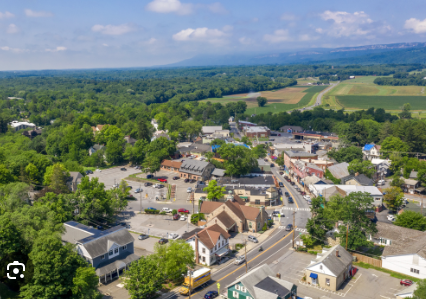
The New Paltz Village Affordable Housing Board will face many changes and proposals in the upcoming year to create and safeguard affordable housing efforts. The latest meeting on Feb. 22 touched upon the effort to ensure affordable units are set aside for 15% of all new projects.
The Village of New Paltz’s affordable housing law currently stands as a written requirement for certain percentages of apartments in larger complexes to be designated as having lower rent, which has been in effect since 2015. The Village has made great efforts to get such numbers into double-digits, meaning a reasonable number of units in proportion to the total complex being designated as affordable for renters. With the work toward these affordable housing “ramping up,” board members are beginning to offer new changes to better meet these community needs and demands in a timely manner.
Board chair Terry Dolan offered up changes and proposals in accordance with these in a public hearing, which was opened on Dec. 20. 2023.
The first suggestion came in the form of proposed income tiers. Currently, a renter can only be added to the waiting list for affordable units if they have an income of 60% or less of the median income in the country, with adjustments for family size.
To expand this eligibility to include those whose income are at 80% and 40% of the median household is believed by the board to have potential benefit for renters. The formula used to determine the maximum rent for those affordable units would still be out of reach for renters in the 40% bracket, according to Hudson Valley One.
Second, the current law includes a clause allowing for past and present residents of New Paltz, as well as service in certain volunteer and paid positions, to be given priority when applying for housing and unit openings.
The third, and potentially the most significant and contested point of the proposal, is the supply side of affordable housing in New Paltz. The current proposal increases the percentage of affordable units for some future projects.
Dolan provided the example that “if approved by the Village Board of Trustees this increase will provide an additional three units of affordable housing in a 50 unit development, compared to the current ordinance.”
“The current waiting list of applicants for affordable housing in the village is at least 100 families, and there are currently no vacant units. Additional units are crucial to beginning to address this problem,” Dolan said.
Dolan anticipates that “the developers profit margins will be stressed under these rules, if they become law.” Countering this, however, is the fact that those same margins have been helped by the unconscionable rent increases of recent years, which have no correlation to price increases of inflation rates.
Additionally, developers have certain freedoms in construction of the units, despite the fact that they cannot differ in exterior appearance and cannot be clumped together in a single part of a project.
The law reads that “the developer may, however, propose different appliances and interior hardware where such substitutions would not adversely impact the habitability of the unit.”
While this appears to undermine the spirit and goal of the law itself, which is guided by preventing worsened quality of affordable-designated units, there are also liberties granted to developers so as to motivate their adoption of the general practices of constructing affordable housing.
